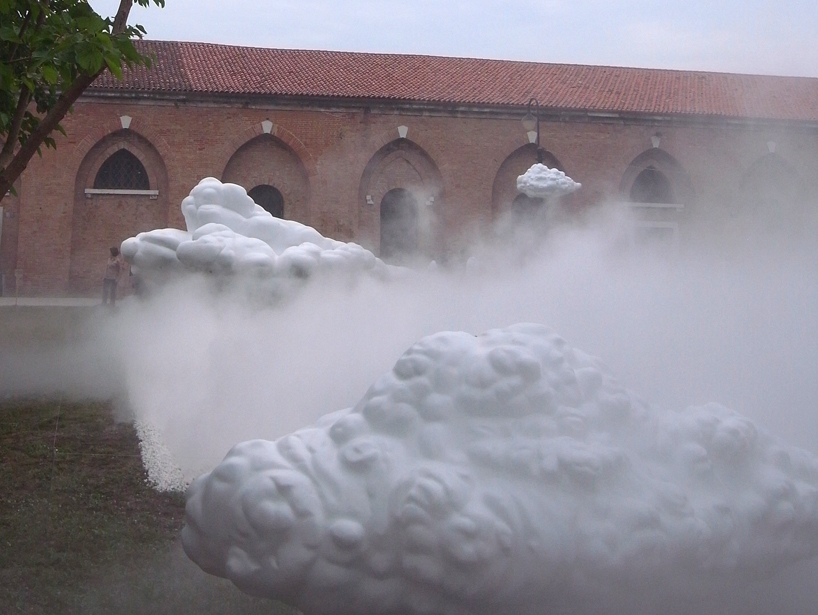
image © designboom
venice is pervaded by 'chinese flavors'
the national chinese pavilion, located within the arsenale area at the venice art biennale 2011, shows 'pervasion' -
artworks created by cai zhisong, liang yuanwei, pan gongkai, yang maoyuan, and yuan gong.
peng feng, vice dean of the aesthetics and educational research center at peking university and curator of the chinese pavilion,
presents five single-artist installations, each redolent of a scent associated with the country's cultural tradition:
tea, lotus, liquor, incense and herbal medicine (as opposed to the west's traditional focus on aesthetics).
here are some pictures from the scene:
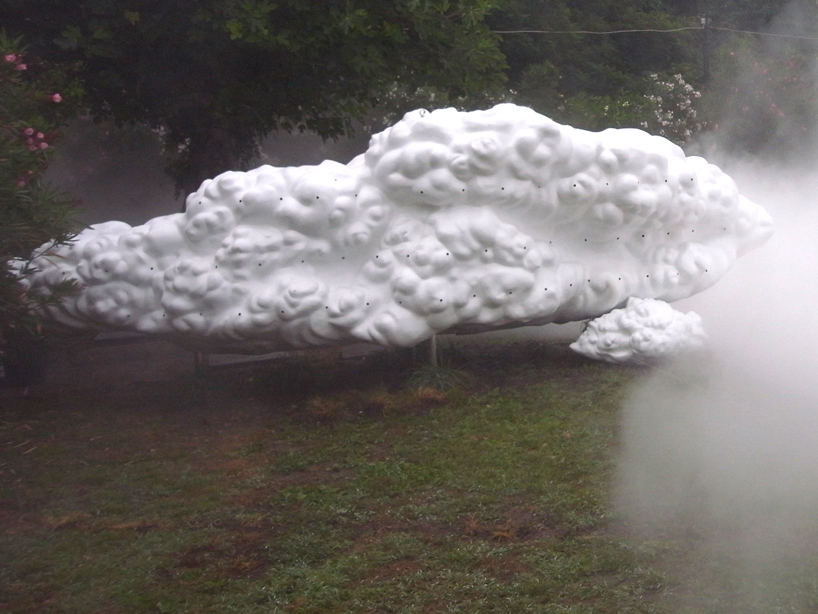
each cloud was lightly coated in white paint to add depth and layeringimage © designboom
flavor and fragrance are designated by the same chinese character…
cai's work evokes tea; liang's the pungent scent of china's traditional white spirit -- 'baijiu'; pan's, the smell of lotus; yang's, medicinal herbs;
and yuan's, incense.
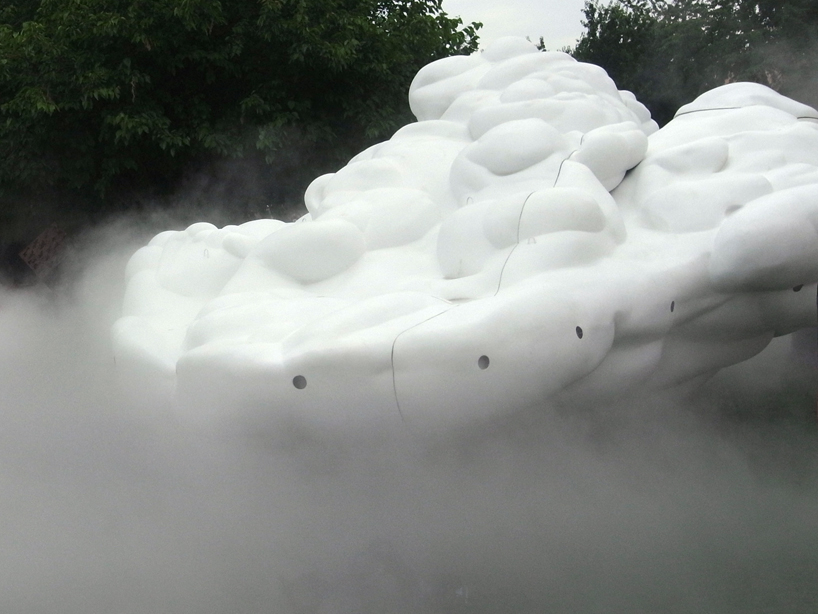
the huge artificial clouds created by young artist cai zhisong
image © designboom
'cloud-tea' by cai zhisong
the white-painted 'devices' are made of steel and house wind chimes and tea.
when moved by the wind, the clouds emit the scent of tea and the sound of the wind itself. the fragrance comes from longjing tea from
the buddhist monks, who drink tea to keep a pure and refreshed mood. the installation is designed to induce feelings of being wakefulness
and enlightenment.
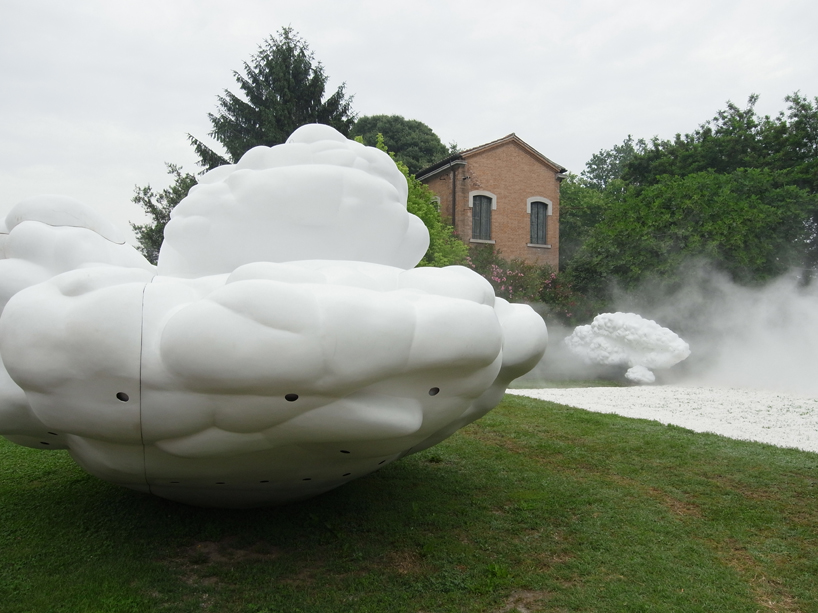
clouds by cai zhisongimage © designboom
though appropriately related, the surrounding fog are incidentally part of another work, 'empty incense' by yuan gong.
using twenty sets of ultrasonic atomizers, the installation's high-pressure water mist system fills the pavilion with atomized incense fog
every two hours, from a square of white pebbles laid on the grass.
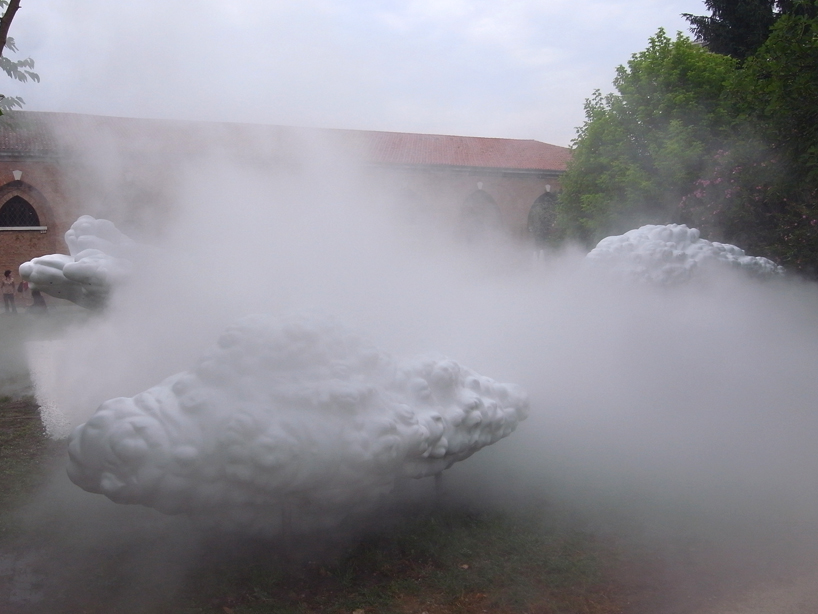
'empty incense' by yuan gong
image © designboom
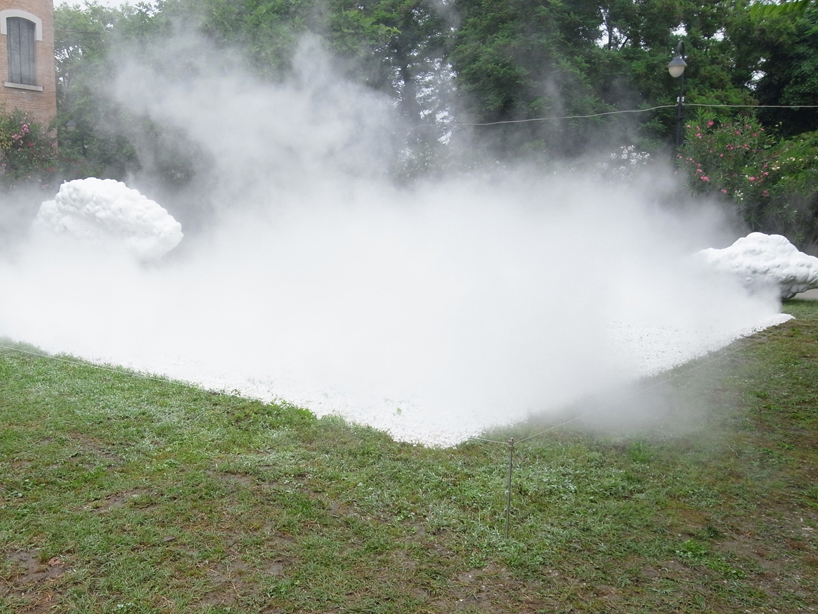
two clouds flanking yuan gong's 'empty incense' image © designboom
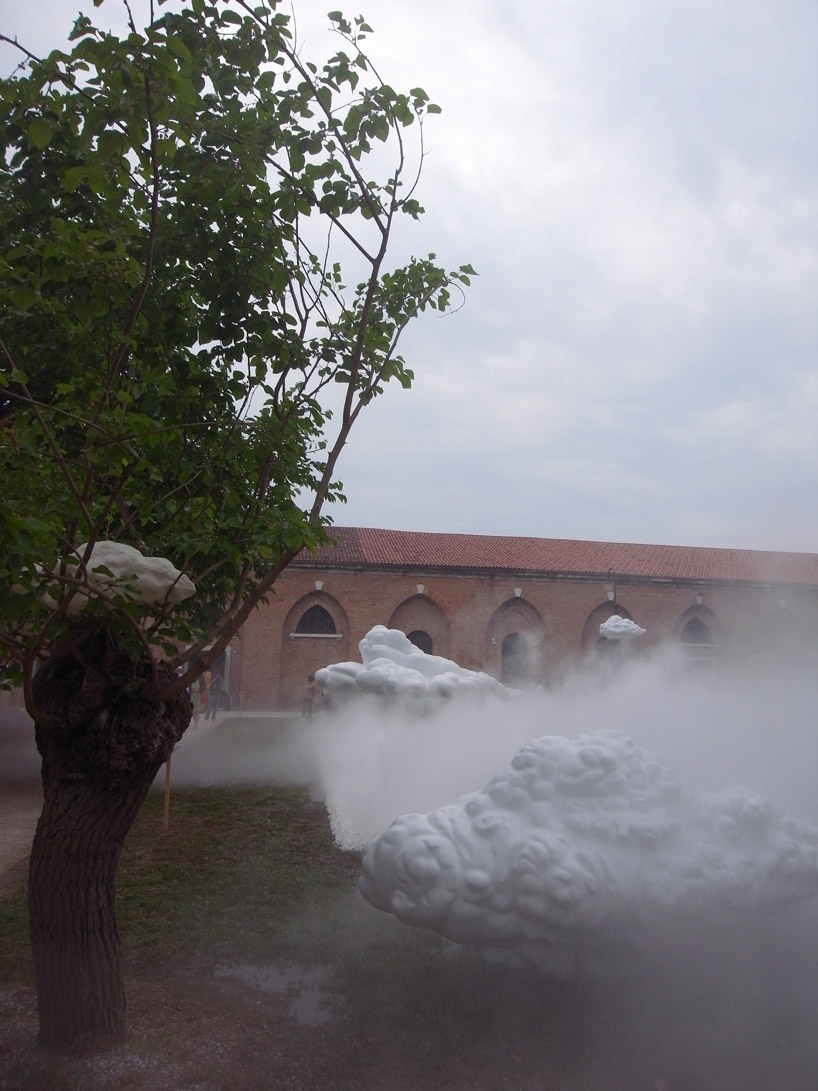 image © designboom
image © designboom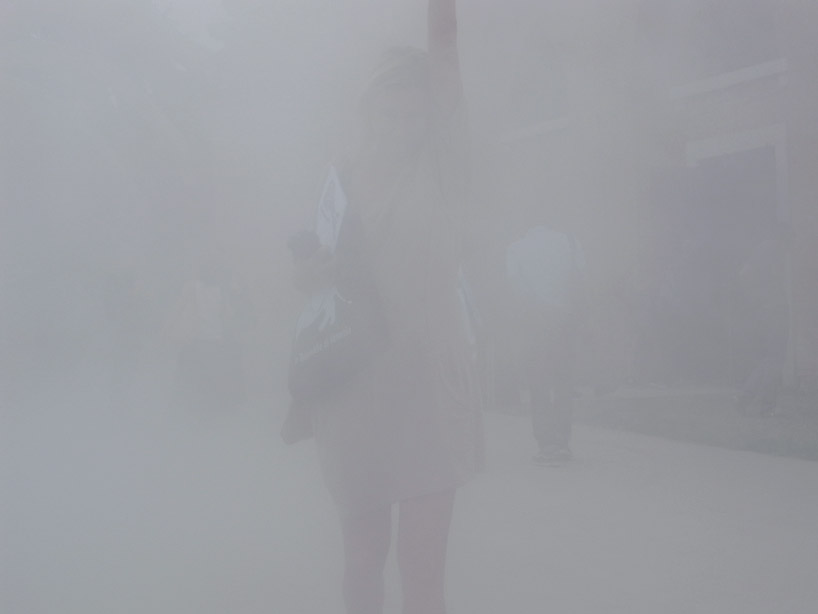
the opaqueness of the smokeimage © designboom
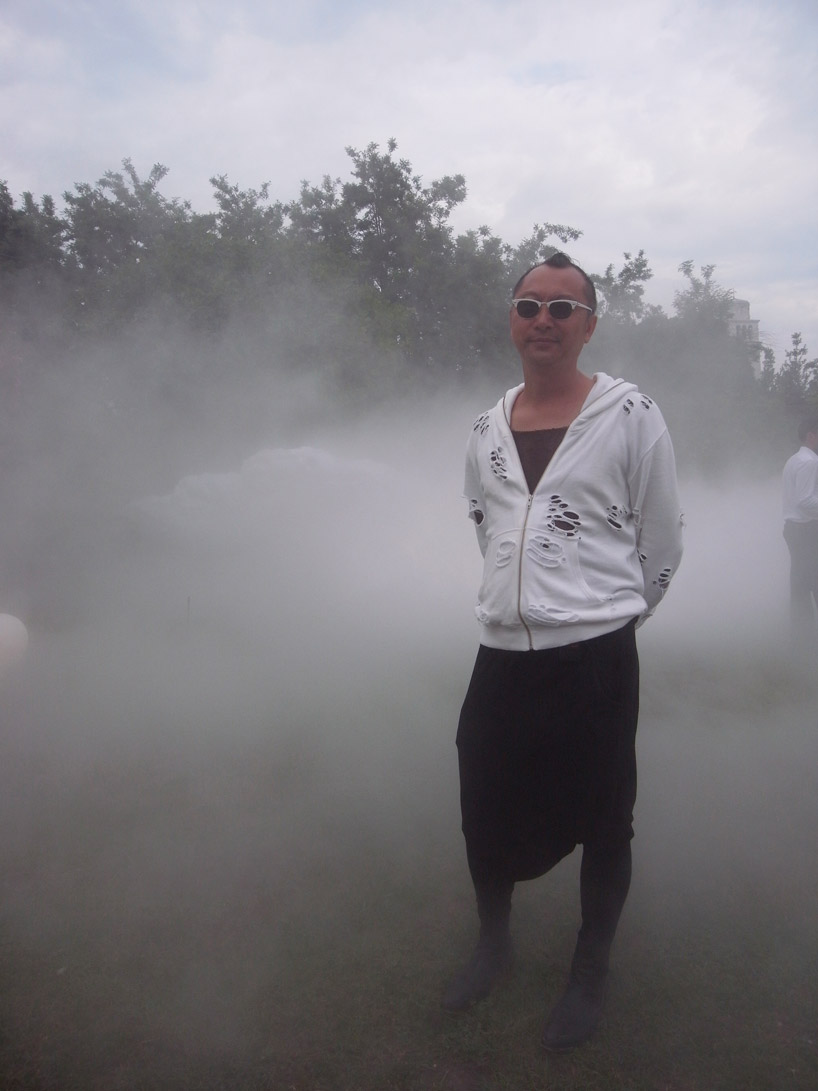
artist yuan gongportrait © designboom
yang maoyuan's 'all things are visible'
on the ground of the arsenale cistern, visitors find thousands of medicine pots. traditional chinese medical prescriptions are carved on the
interior of these pots but on their outside there are no signs.
'according to the theory of traditional chinese medicine, all things are visible, be it the acupuncture points, meridians or collaterals,' yang illustrated,
'however, they do not exist at all to modern science.'
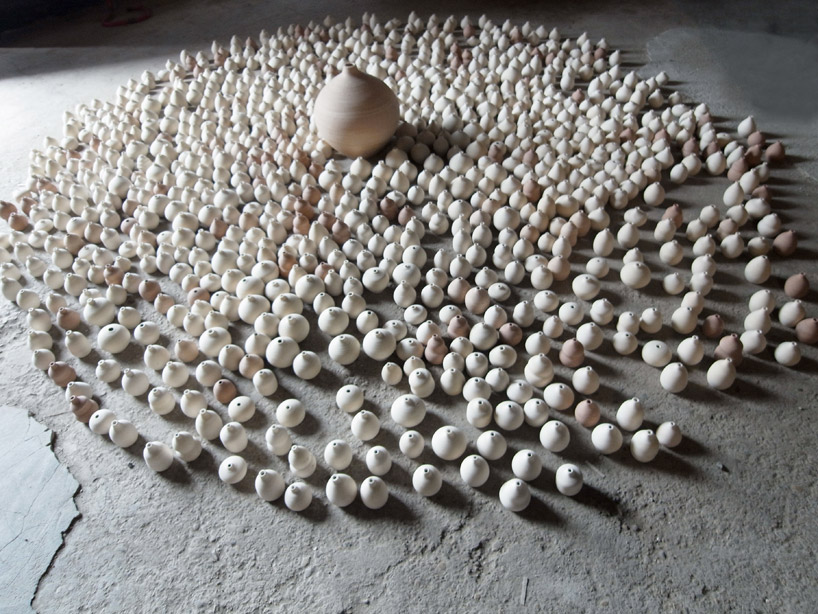
yang maoyuan's 'all things are visible'
image © designboom
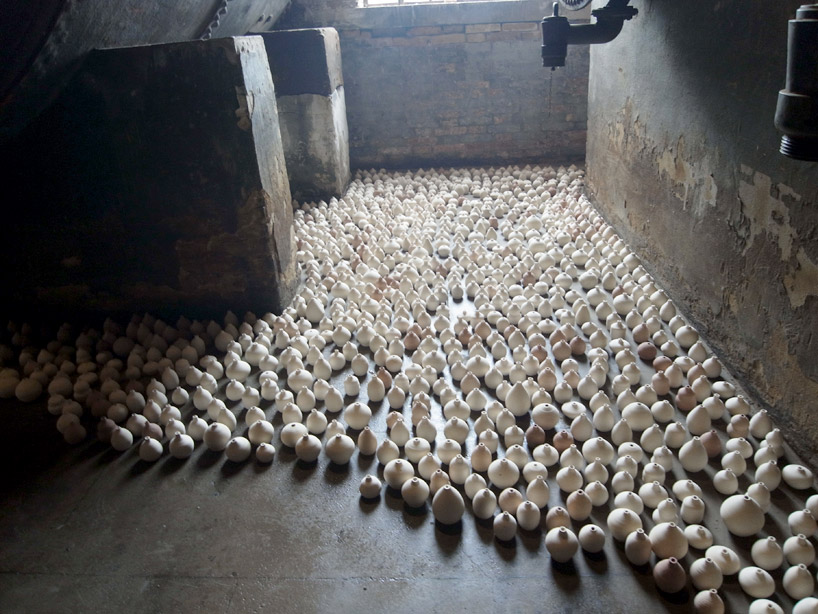
yang maoyuan's 'all things are visible'
image © designboom
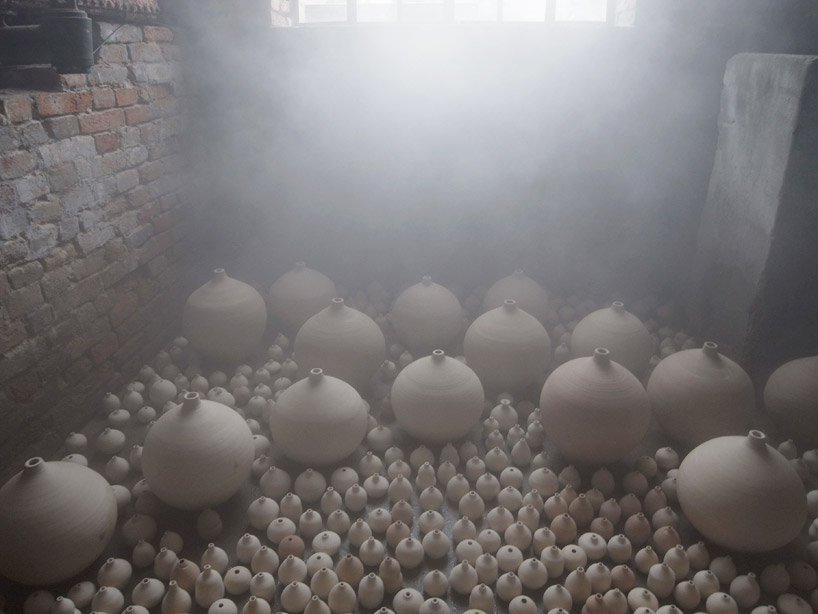
yang maoyuan's 'all things are visible'
image © designboom
- ۹۰/۰۴/۱۶





















